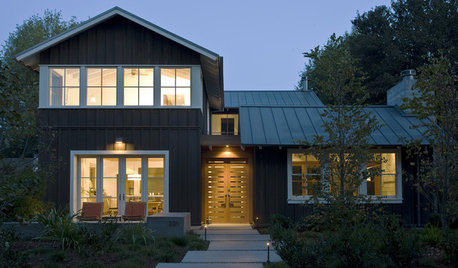Wal-mart Venus Fly Trap
binkalette
18 years ago
Featured Answer
Comments (41)
lleopardggecko
18 years agolast modified: 9 years agoRelated Discussions
my venus flytrap is dying!!!!
Comments (21)I have a Venus Fly Trap I brought it like 2 months ago. Its been good in its puny box thing. I brought it at Gardening Ridge and one week I forgot to water it. It slowly started to die. So I transplanted it in a plastic pot with clay, humus, the soil that came with it and two other soils around my garden that i couldn't identify. I also wrinkled up magnolia leaves to use as mulch and weighed it with some sand. It is still dying. It is getting black in some parts and they are dying off. Currently it is on a table outside about three feet high and has one stem and bud which are both partially black. I know it was a big mistake to take it out, but i didn't know about this first. I'm probably not aloud to get perlite, peat moss, or play sand. Maybe distilled water, but if I can't can I use water from the fridge (Old filter)? I have a good light. Do i need to keep it outside, do I need to cut the one remaining stem thingy off almost to the bottom, and one last thing, is there even a way to keep my VFT alive with all these restrictions?...See MoreShocked Fly Trap
Comments (15)When it comes to transplanting keep the plants where they are and see how well they grow. Chances are, it will take a few months for the alkalinity of the rocks to pass to the soil. Your plants need to get stronger. Or maybe you are lucky and those rocks are not alkaline. You can get a ph test kit to test the alkalinity of the water, crush some of those small rocks, then put water on your test kit vile, put the drops to see the color of the water, then dumpt what you have crushed from the rocks inside the vile. If the water in there turns another color when you dump the rocks and that color is blue, you know your rocks are alkaline. If the water has turn blue without the rocks, you will need to acidify the water. Just place clean clear water in a drinking glass, place a couple of drops of lemon in it and test the water. The water should be a kind of greenish yellow when you place the color drops on the vile to test the water. That is the newtral color. Then after you have your neutral color, dump the crushed rocks and see if the color changes to blue. If you have colored rocks crush one that is of a green color, then crush another one that is a yellow color and see if you get the same results when you test them. Take care....See MoreVenus, Sundew, and Pitcher plant appear to be dieing
Comments (11)Nycti: Misting really does not harm them, nor will it actually benefit them greatly. They do get rained on all the time, so what I use it for is just a means of cleaning them off. It does remove spores, dust, and dead bugs. Trio123: The 24 inch lights are too low wattage. You do not need to worry about spectrum if you go with cool white or true daylight as they simulate the natural spectrum of light that plants need anyways. I use the 48 inch shop lights with twin tube mounts. They are long and unwieldy, but they work great if they are set up on a shelf system and can provide good lighting for a number of plants along a 4 foot shelf. I would suggest placing the shelf in a window for added light. In any case, the tubes will come with a information list on the box that states the lumens... 40 watt tubes are about 3000 lumens according to who made them and what they were made for. You do not need anything specifically made for plants, like plant lights, as they usually are just more expensive types of florescent lights that are only slightly different from the cool white ones in shop lights. My lighting system covers a 4 foot shelf with four tubes side by side providing 12000 lumens to a number of plants. Total cost is about 24 dollars and the tubes usually take years to burn out.. though you should replace them once a year as they dim a lot after that. The pesticide might help as well if you have a bad sap sucking pest problem as Nycti indicated....See MoreVenus Fly Trap help (I'm new)
Comments (32)suckerforroses: Patience is key to stratifying seeds of North American plants of any type. In any case, the Venus Flytrap seed should have sprouted by now. That terrarium kit is the worst idea I have seen in all my decades for North American carnivorous plants in any case. First off, it is not for beginners. Second off, carnivorous plant seed rarely take 100 percent, so you rarely have all of the species germinate. Third off, terrariums are the best way to kill carnivorous plants by promoting fungus, reducing the amount of sun they can recieve, and the drainage problems of terrariums promote bacterial infection to boot. Oh, one other point is that carnivorousplants take years to grow to a good size, so is also terrible for those of us with little patience. Some of the seeds might even take 6 months to actually sprout if at all. If you keep the kit, try stratifying them again for 8 weeks as carnivorousplants advised and then when you take it out of the fridge, ditch the terrarium top, drill some holes in the bottom and place it in a tray of 1 inch water under good window or florescent light and hope for the best. You can never tell how long the seeds they sent you in those little gimmick kits have been sitting around in cold strorage. The only stay viable for about a year or two. The Venus Flytrap seeds do not need stratification, but can survive cold overwintering, so it wont hurt anything to keep them cold, but that kit did not even tell you that the Flytrap seeds did not need stratification I bet. The other North Amrican seeds from the pitcher plants and sundews will need stratification for sure. Without cold, damp conditions their seed coats do not break down and allow them to germinate. If you are interested in growing carnivorous plants, get a real bargain by trading or asking for plants from growers here or by buying from a specialist nursery and obtaining adult plants with no nonsense instructions or silly terrariums to start with. Not many carnivorous plants need a terrarium to grow well (only a few of the finicky tropicals) in most environments....See Morelleopardggecko
18 years agolast modified: 9 years agonecro1234
18 years agolast modified: 9 years agolleopardggecko
18 years agolast modified: 9 years agonecro1234
18 years agolast modified: 9 years agoaashahid
17 years agolast modified: 9 years agotommyr_gw Zone 6
17 years agolast modified: 9 years agodr.faustus
16 years agolast modified: 9 years agomutant_hybrid
16 years agolast modified: 9 years agodon555
16 years agolast modified: 9 years agodr.faustus
16 years agolast modified: 9 years agodon555
16 years agolast modified: 9 years agodr.faustus
16 years agolast modified: 9 years agomutant_hybrid
16 years agolast modified: 9 years agoorganicmizzou
16 years agolast modified: 9 years agoantechron
16 years agolast modified: 9 years agomutant_hybrid
16 years agolast modified: 9 years agoalvis_frink
16 years agolast modified: 9 years agomutant_hybrid
16 years agolast modified: 9 years agoalvis_frink
16 years agolast modified: 9 years agoalastair_leung_gmail_com
16 years agolast modified: 9 years agomutant_hybrid
16 years agolast modified: 9 years agoblp0
16 years agolast modified: 9 years agomutant_hybrid
16 years agolast modified: 9 years agoalvis_frink
16 years agolast modified: 9 years agomutant_hybrid
16 years agolast modified: 9 years agodrwurm
16 years agolast modified: 9 years agogaryfla_gw
16 years agolast modified: 9 years agohunterkiller03
16 years agolast modified: 9 years agomutant_hybrid
16 years agolast modified: 9 years agohunterkiller03
16 years agolast modified: 9 years agochunkychocobo
15 years agolast modified: 9 years agopetiolaris
15 years agolast modified: 9 years agoseismo
15 years agolast modified: 9 years agomcantrell
15 years agolast modified: 9 years agoseismo
15 years agolast modified: 9 years agohunterkiller03
15 years agolast modified: 9 years agobeecee151
11 years agolast modified: 9 years agograystripe101
9 years agolast modified: 9 years agoHU-214108924
5 years ago
Related Stories

LIGHTINGHow to Choose the Right Solar Lights
Learn about different types of outdoor solar lights, where to use them and why you might want to avoid the bargain bin
Full Story
DECORATING GUIDESPro to Pro: Learn Your Client’s Thinking Style
Knowing how someone thinks can help you determine the best way to conduct an interior design presentation
Full Story
MOST POPULAR33 Magic Household Cleaning Tips
Houzzers from around the world share their tips for transforming housework into child’s play
Full Story


necro1234